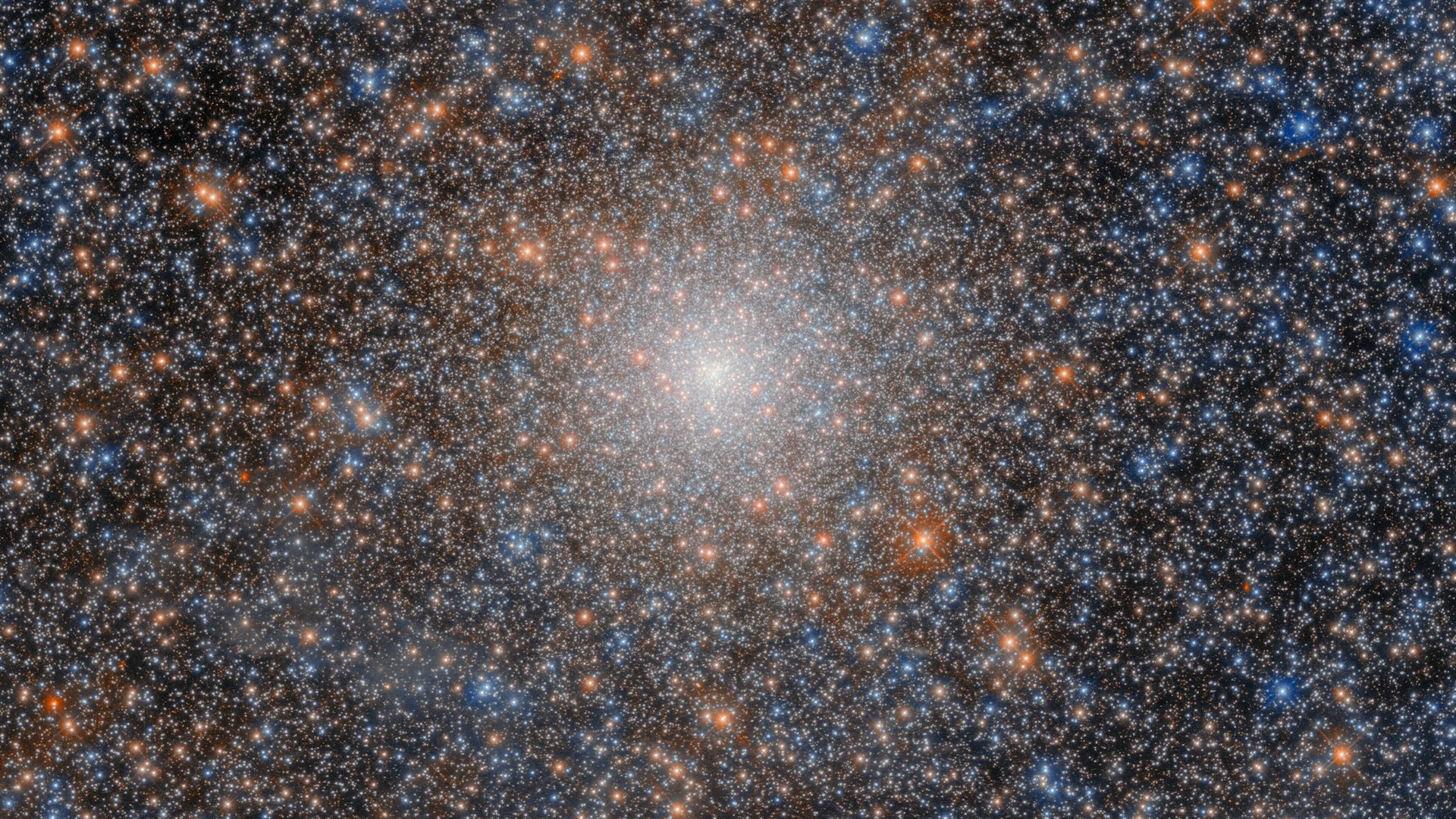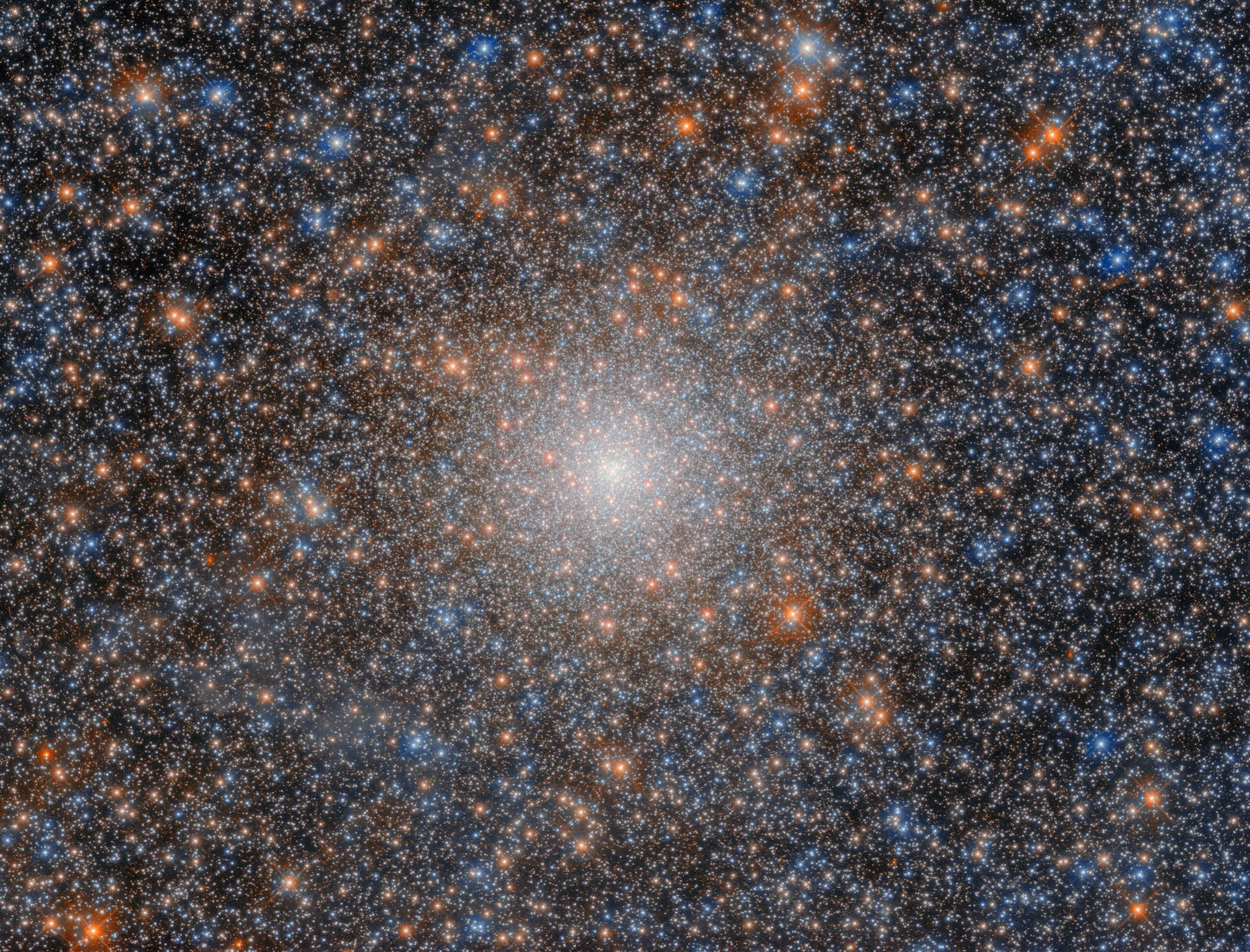Space photo of the week: A cosmic 'fossil' holding some of the oldest stars in the universe
The Hubble Space Telescope zooms in on a dense ball of millions of stars within a galaxy orbiting the Milky Way. Its ancient origins raise big questions about how galaxies form and grow.

What it is: Globular cluster NGC 2005
Where it is: 162,000 light-years away, in the Large Magellanic Cloud, a satellite galaxy of the Milky Way, and visible in the constellation Dorado
When it was shared: July 7, 2024
Why it's so special: This new image from the Hubble Space Telescope shows an object with mysterious origins that's commonly seen in the Milky Way: a globular cluster, a densely packed and gravitationally bound group of tens of thousands or millions of stars. However, NGC 2005 is actually located in the Large Magellanic Cloud (LMC), a dwarf galaxy close to the Milky Way, and can be easily seen at night from the Southern Hemisphere.
Globular clusters are thought to be billions of years old. About 150 are known to exist in the halo of the Milky Way. They orbit its center in the opposite direction as most other objects in our galaxy, providing evidence for a theory that they were captured while the Milky Way was merging with other galaxies, according to NASA. That's how astronomers think galaxies evolve and grow. Another clue is that globular clusters host some of the oldest stars in the universe.
Related: The Milky Way will be visible without a telescope this summer. Here are the key nights to watch for.
NGC 2005 is the perfect test case because it exists outside the Milky Way but is close enough to be studied carefully. It's about 750 light-years from the heart of the LMC, the biggest of about 40 dwarf galaxies near the Milky Way. Many of these dwarf galaxies are thought to orbit the Milky Way, though recent data from the Gaia spacecraft suggest that many of them may just be passing by.
Sign up for the Live Science daily newsletter now
Get the world’s most fascinating discoveries delivered straight to your inbox.

If galaxies evolve by merging with others, there ought to be ancient stars in all galaxies whose chemical compositions differ from those around them. That's exactly the case with NGC 2005. It appears to be a relic — possibly the core — of a dwarf galaxy that has long since been consumed.
The LMC can be easily seen from the Southern Hemisphere on almost any clear night with a good small telescope or a pair of stargazing binoculars. The LMC is 162,000 light-years from the solar system, making it one of the closest galaxies to the Milky Way. It contains globular clusters, dense star fields and the Tarantula Nebula, a supermassive version of the Milky Way's Orion Nebula.

Jamie Carter is a freelance journalist and regular Live Science contributor based in Cardiff, U.K. He is the author of A Stargazing Program For Beginners and lectures on astronomy and the natural world. Jamie regularly writes for Space.com, TechRadar.com, Forbes Science, BBC Wildlife magazine and Scientific American, and many others. He edits WhenIsTheNextEclipse.com.









